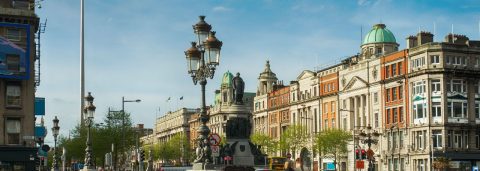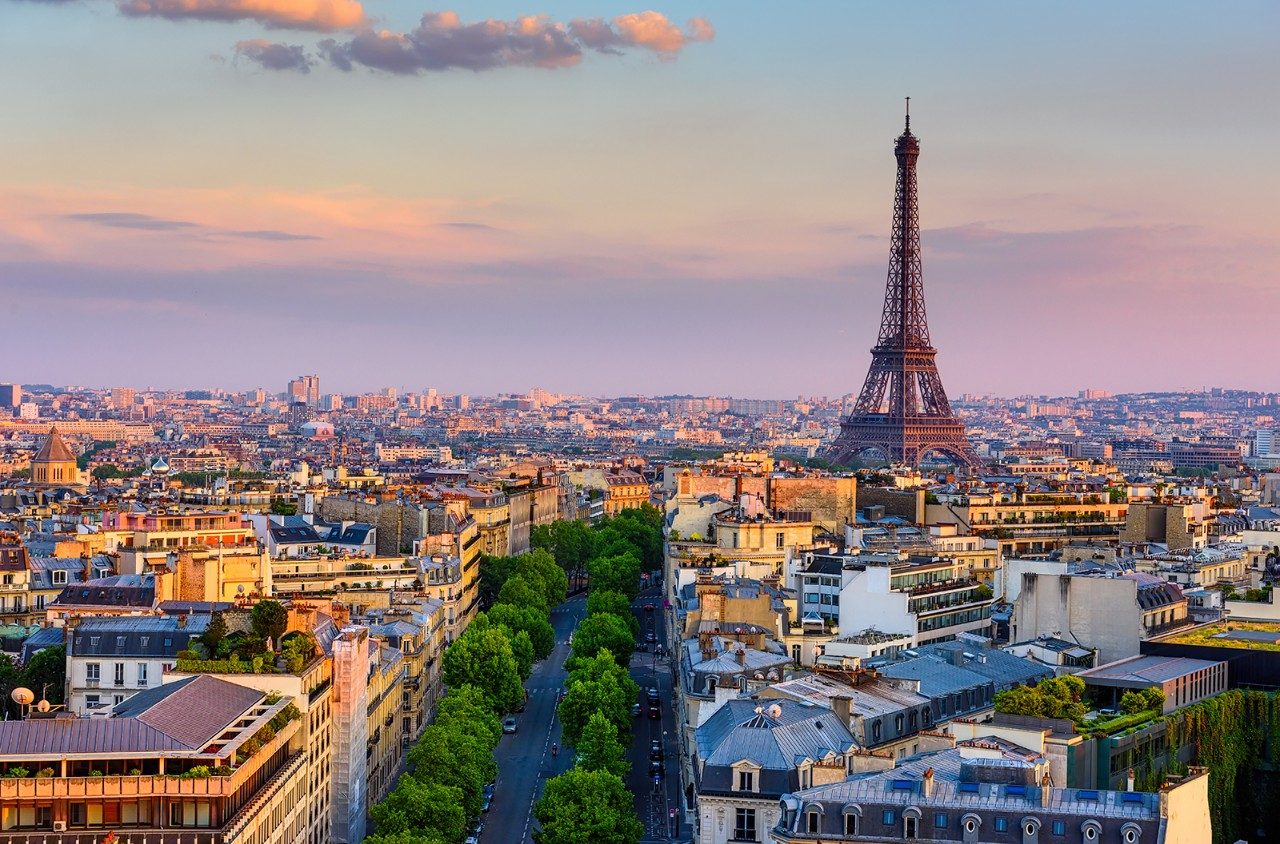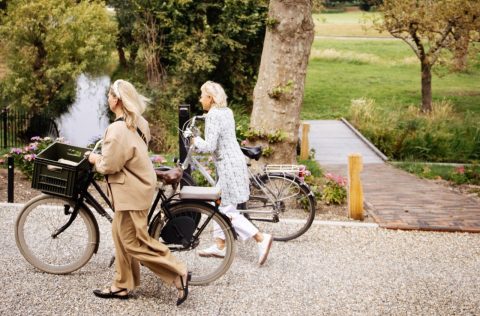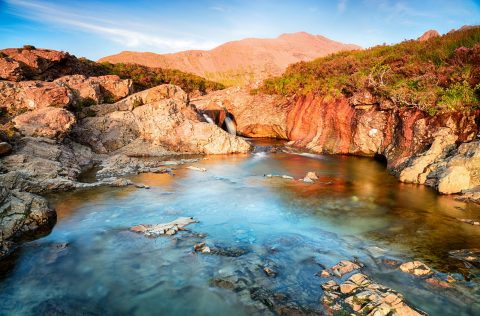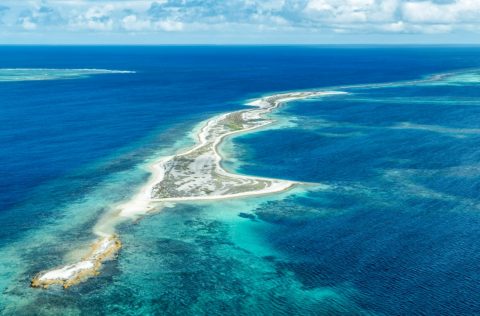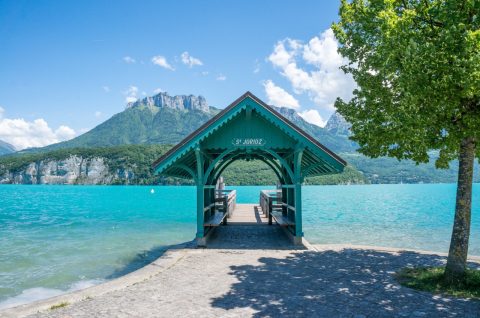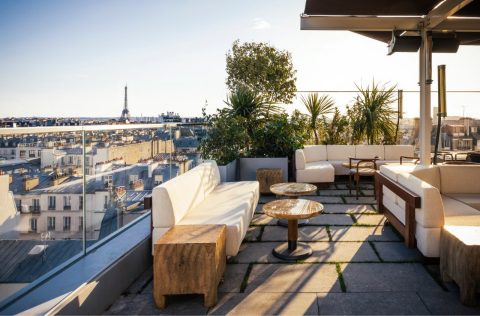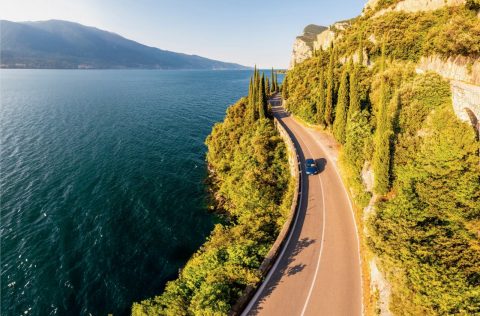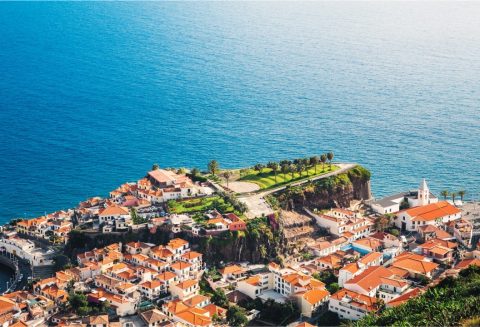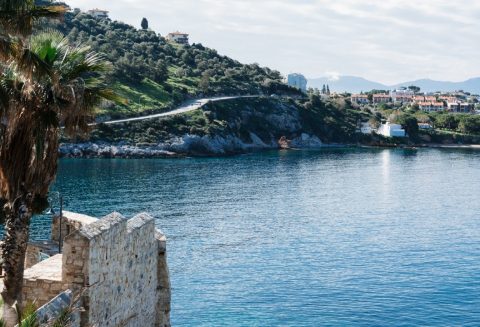40 European Destinations You've (Probably) Never Heard Of
There’s a good reason why Australians pine for a European adventure, year after year. From ski resorts to beach escapes, culture-filled cities to idyllic villages, there are endless ways to experience the continent. High on many travellers’ wish lists are the big-hitting capitals (the likes of Rome, Paris and London) or else the sun-soaked islands of Greece, Italy and the Mediterranean. But there’s so much more to see across the 10.53 million square-kilometres of continental Europe than just these classic destinations. When you plan your next jaunt to the Northern Hemisphere, let this list of under-the-radar Euro gems be your inspiration.
Image credit: Getty Images/500px Prime
Procida, Campagnia, Italy
1/41You've heard of Portofino but what about Procida? The smallest island in Italy's Bay of Naples has managed to fly mostly under the radar – for now, at least. Locals outnumber tourists in the steep, narrow streets here, which are lined with picture-perfect pastel buildings. If it all looks little familiar, you might have seen the island feature in the 1994 film The Talented Mr Ripley or the Italian cinema classic Il Postino.
Image credit: Getty Images
Porto, North Portugal, Portugal
2/41Portugal’s second city is renowned for its port wine production, fabulous food and dazzling riverside location. Its centre is a warren of medieval buildings and steep cobblestone streets with Baroque churches repurposed as bars and fortresses doubling as port cellars. The city is home to one of the oldest bookshops in the world, the Livraria Lello – it allegedly inspired J.K. Rowling’s fictional bookshop Flourish and Blotts in the Harry Potter series.
Image credit: Getty Images/Lonely Planet Image
Ghent, East Flanders, Belgium
3/41Everyone knows the impossibly pretty medieval city of Bruges. Now, we’d like to introduce you to Ghent. Challenging Bruges in the canal and cobbled-street stakes, Ghent is quaint and cosy yet large enough to provide those big-city experiences: impressive architecture, efficient public transport and a lively night-time economy.
Image credit: Getty Images
Constanța, Dobruja, Romania
4/41Charming, artsy Constanța is a bustling seaport on the Black Sea, the oldest continually inhabited city in Romania. In Roman times, the poet Ovid was banished here; he denounced it as a cultural backwater. Now, though, its art, monuments, archaeological treasures and proximity to Black Sea beach resorts make Constanța quite the sought-after spot.
Image credit: Getty Images
Loch Awe, Argyll and Bute, Scotland
5/41The name says it all, no? The moniker applies to both the large freshwater lake in the Scottish Highlands and a village on its banks. The area is known for its trout and salmon fishing, castle ruins and dramatic Highlands scenery. The loch itself is the longest in the UK and on its shores are no fewer than six ruined medieval castles including Kilchurn, built in the 15th century and ultimately destroyed by lightning in 1760.
Image credit: Getty Images/Hemis.fr RM
Vézelay, Bourgogne-Franche-Comté, France
6/41This diminutive hilltop village has been a wine-growing community since Romans planted grapevines in the first century. It is simply sublime, with historic houses, streets paved with shells laid by pilgrims and views over the Cure valley. Both the town and its abbey are both UNESCO World Heritage Listed; the abbey acquired the relics of St Mary Magdalene in the 9th century and in 1190, Richard the Lion-Hearted and Philip II Augustus met here to depart for the Third Crusade.
Image credit: Alamy Stock Photo
Vaduz, Liechtenstein
7/41The capital of Liechtenstein is almost as diminutive as the country (well, technically it’s a microstate) itself. In fact, it’s not even a city – Vaduz is a town of about 5500 residents who enjoy its location on the banks of the Rhine, its stunning castle and the dramatic mountains that soar above it. There are plenty of vineyards, a thriving food scene and incredible skiing.
Image credit: Getty Images
Tropea, Calabria, Italy
8/41While Italy's biggest cities swells with tourists, its toe – the narrow peninsula of Calabria separated from Sicily by the Strait of Messina – is delightfully empty. Visit Tropea: the beauty of its sun-drenched coastline is only challenged by the charm of the historic town built on a cliff overlooking the pure blue sea. Its narrow cobbled lanes and quiet piazzas provide a backdrop for an annual blues festival – though who could sing the blues here?
Image credit: Getty Images
Tromsø, Troms, Norway
9/41The largest city in Norway’s north, Tromsø is known for its distinctive wooden houses, cultural events and pristine wilderness. Located on an island just above the Arctic Circle, it’s a prime spot from which to observe the Northern Lights. From 20 April to 22 August, the midnight sun means everyone, locals and visitors alike, is often out and about around the clock.
Image credit: Getty Images
Tallinn, Harju County, Estonia
10/41There are many things going for Estonia’s capital: its perfectly preserved UNESCO World Heritage-listed old town, easy public transport network and its wonderful collection of galleries and museums (aficionados of lace, children’s literature, puppetry and Estonian drinking culture will all find treasures here).
Image credit: Getty Images/Westend61
St. Gilgen, Salzburg, Austria
11/41Calling all Sound of Music fans: here, you can live out your von Trapp fantasies in St. Gilgen without some other tone-deaf fanatic harshing your vibe. St. Gilgen is a quintessential Austrian alpine village with a beautiful blue lake, the Wolfgangsee, and lovely traditional Christmas markets come winter.
Image credit: Getty Images/Lonely Planet Image
Skopje, North Macedonia, Macedonia
12/41Tiny, mountainous Macedonia is slowly gaining traction with tourists and its capital city, Skopje, is one of the best places to experience the country’s culture and history. Macedonia is a mish-mash of culture, and the riverside capital is the perfect microcosm of this eclectic country. Hole up in a cosy coffee house in Debar Maalo, explore the 12th century Old Bazaar and take in the kitsch of the Skopje 2014 project which saw a series of enormous statues installed around the city – including a 40,000-tonne Alexander the Great.
Image credit: Getty Images/Westend61
Regensburg, Bavaria, Germany
13/41This riverside city’s history stretches back to the Stone Age; Regensburg was called Radasbona by Celtic settlers and the Danube was known as Danubius in Roman times. It managed to avoid the fate of many European cities during World War II, emerging unscathed and being named a UNESCO World Heritage Site thanks to its well-preserved medieval centre; the largest north of the Alps.
Image credit: Getty Images
Pula, Istria, Croatia
14/41Pula’s claim to fame is a quite remarkable array of Roman ruins, which are artfully integrated into the modern city. There’s a first-century amphitheatre where once crowds of thousands watched gladiatorial matches; now it hosts open-air concerts and an annual film festival. The Roman Forum is presently the main square. Istria was a part of Italy until 1947 so you will find top-notch pizza, pasta and ubiquitous gelato in Pula.
Image credit: Getty Images
Prizren, Prizren District, Kosovo
15/41The Bistrica River floats peacefully through the middle of Kosovo's Prizren, lined on each side with cafés, bars and restaurants. The southern city, close to the Rahovec wine region, is Kosovo’s cultural capital, hosting film festivals and championing local artisans whose stunning silver filigree jewellery is made using techniques dating back to 15th century Ottoman caravans.
Image credit: irakite - stock.adobe.com
Piran, Slovenene Istria, Slovenia
16/41Situated along the Adriatic coast, this resort town located on the “Slovene Riviera” lags behind Bled and Ljublana with visitors to Slovenia. It’s a mystery why: between its crystal Adriatic waters and its picturesque medieval old town, it’s the perfect European getaway. And culturally, there’s a lot to take in: in the past 100 years alone, Piran has been in the hands of the Austro-Hungarian Empire, Italy, Yugoslavia and, since 1991, independent Slovenia.
Image credit: Getty Images
Delphi, Phocis, Greece
17/41If faced with an important decision in ancient times, you likely wouldn’t make it without consulting Pythia, the oracle at Delphi. She made her predictions from the Sanctuary of Apollo (4th century BC), the remains of which can be seen in the vast archaeological complex on the south-western slope of Mount Parnassus. Ancient Delphi was known as the “navel of the world”; the modern city has great options for dining and is less than 30 minutes from the Corinthian coast.
Image credit: Getty Images
Mostar, Herzegovina-Neretva Canton, Bosnia and Herzegovina
18/41Standing bestride the Neretva River, Mostar’s most famous landmark is the Stari Most (Old Bridge), a gorgeous arched bridge originally built by Ottomans in the 16th century. The brutal Bosnian War in the 1990s left many buildings in Mostar damaged or destroyed; the bridge was one such casualty and was rebuilt in 2004. Mostar is more than a bridge, though – it’s medieval neighbourhoods, swimming lakes fed by waterfalls, the beautiful Dervish Monastery of Blagaj Tekke and an inexplicable 1.68cm statue of Bruce Lee in Zrinjevac Park.
Image credit: Matera, Basilicata, Italy
Matera, Basilicata, Italy
19/41Matera is one of the most remarkable cities in Italy. It’s famed for its historical centre, Sassi di Matera, which is carved out of calcareous rock, called “tufo” and dates back to Paleolithic times. Though successive governments removed people from the cave-dwellings, since the 1980s the area has been regenerated and visitors can stay in a real Sassi cave dwelling and partake of the many restaurants and bars that have cropped up.
Image credit: Getty Images
Logroño, La Rioja, Spain
20/41Logroño is on the Camino de Santiago pilgrimage route to Santiago de Compostela in northern Spain but it’s much more than a mere rest-stop. Its attractive city centre teems with taperias serving traditional pintxo along with the region’s famous rioja wine and its many churches, plazas and museums are worthy of exploration.
Image credit: Getty Images/Hemis.fr RM
Lille, Hauts-de-France, France
21/41Like Paris, the university city of Lille is replete with history, culture and fabulous food; unlike Paris it lacks tourist crowds and sometimes inflated prices. Its historic centre dates back to the 17th century with many Flemish-style red- and- brown-brick buildings. Each September, it holds La Grande Braderie, a weekend-long flea market that has millions of attendees and more than 10,000 sellers.
Image credit: Getty Images/Robert Harding Worl
The Isles of Scilly, Cornwall, United Kingdom
22/41If the Cornish coastline is a glittering crown, the archipelago known as the Isles of Scilly, 45 kilometres off its south-western tip, is its jewel. One hundred and forty white-sand islands make up Scilly; just five are inhabited. What’s most fascinating about them is their subtropical climate (thanks to balmy Gulf Stream temperatures and low-lying geography) – compared to the mainland, it’s practically the Whitsundays.
Image credit: Getty Images
Gozo, Malta
23/41Most tourists explore the main island of Malta with its shops, bars, museums and beaches but the neighbouring isle of Gozo is just as beautiful (and, it has the added bonus of being significantly more chilled out). On Gozo, the air is redolent of wild fennel and rosemary and the sound of goat bells carries on the wind. The tiny capital, Ir-Rabat (Victoria), is an oasis of squat yellow buildings surrounding the 14th century-fortified Cittadella.
Image credit: Getty Images
Gdansk, Kashubia, Poland
24/41Largely rebuilt after enduring heavy air raids in World War II, Gdansk’s Germanic architecture was replaced with other European-influenced styles such as Italian, Flemish and French. Now, this pretty city on the Baltic Sea is a place of wide pedestrian boulevards, narrow row-houses and two universities.
Image credit: Getty Images
Vágar, the Faroe Islands, The Kingdom of Denmark
25/41Eighteen far-flung islands, adrift in the North Atlantic Ocean halfway between Iceland and Scotland, make up the archipelago of the Faroe Islands. Mystifyingly, settlers arrived here sometime around 300AD – no one knows quite who they were – and despite the rocky terrain and chilly climate, they decided to stay. Vágar, the only island with an airport, has some impressive sights such as the incredible lakes of Leitisvatn and Fjallavatn, historic villages and a massive bird population (including 40,000 puffins).
Image credit: Alamy Stock Photo
Éze, Alpes-Maritimes, France
26/41The French Riviera: Cannes, Nice, Monaco, oh my! But have you heard of Éze, the historic mountaintop village that’s all narrow winding lanes, archways opening out on to quiet courtyards and bougainvillea-draped houses? Here, the air is sweetly perfumed – thanks to a handful of boutique perfumeries including Fragonard – and the many restaurants, cafes and bars have stunning views over the Mediterranean.
Image credit: Getty Images/Robert Harding Worl
Esztergom, Komárom-Esztergom, Hungary
27/41This town in Northern Hungary was the country’s capital from the 10th century until the 13th century but its history goes even further back: recent excavations reveal habitation here since the end of the Ice Age. Esztergom is positively littered with incredible ancient buildings – to visit is to step back in time.
Image credit: Getty Images/Lonely Planet Image
Gothenburg, Västra Götaland County, Sweden
28/41If the name Gothenburg conjures some kind of dark and gritty Batman-esque Gotham City, you’ll be disappointed by Sweden’s second city. Its main claim to fame is a fun-park, the Liseberg Amusement Park, the “Fish Church” fish market and festivals dedicated to music, beer and cherry blossoms – and it’s pronounced “yuh-teh-bore-ee”.
Image credit: Getty Images
Chișinău, Municipality of Chișinău, Moldova
29/41Wine-lovers, listen up: forget Bordeaux and head to Moldova. The tiny country squeezed between Romania and Ukraine is home to the Milestii Mici underground wine cellars, holding almost 2 million bottles of the good stuff across 250 kilometres of passages 50 metres below ground. It is so large that people bike or drive around its “streets”. Milestii Mici is located just outside Moldova’s capital Chișinău, a stark city rebuilt in Stalinist style following World War II.
Image credit: Getty Images/500px
Český Krumlov, South Bohemia, Czech Republic
30/41Located just a couple of hours drive from Prague, Český Krumlov has a lot of things going for it, not least a dearth of Brits on stag weekends taking advantage of cheap Czech beer. There’s a fairy-tale castle set over the meandering Vltava River, Renaissance and Baroque architecture and an old town made for strolling. Tourists tend to be day-trippers from Prague but a stay in the town will reward visitors with a spirited nightlife – don’t leave without experiencing a Roma gypsy musical performance.
Image credit: Getty Images
Bratislava, Bratislavia Region, Slovakia
31/41Bratislava Castle presides over the pretty buildings of Slovakia’s capital, built on a plateau 85 metres above the Danube. The city is in the midst of a modernisation push but new edifices don’t mar the feel of the city – especially when it has ample baroque palaces, medieval cathedrals and, allegedly, Europe’s narrowest house. Like this mini-dwelling, what Bratislava lacks in size it makes up for in personality – unsurprising considering that in its long history it’s had to exert itself against Austrians, Bulgarians, Hungarians, Serbs and many more
Image credit: Getty Images/iStockphoto
Berat, Berat County, Albania
32/41The capital of Albania, Tirana, has a burgeoning tourism industry, but for our money, Berat is Albania’s must-see. It’s one of the country’s oldest towns, its architecture a fascinating melange of Ottoman and Albanian styles that has earned it the nickname “City of a Thousand Windows”. It’s a true treasure trove of history and culture: mosques built within castles, castles built upon rocky outcrops and the stunning arched Gorica Bridge, which spans the Osum River.
Image credit: Belgrade, City of Belgrade, Serbia
Belgrade, City of Belgrade, Serbia
33/41Belgrade is home to two important museums, The National Museum and Mocab Museum of Contemporary Art, recently reopened, there are several sandy beaches and the town of Zemun, with its cobbled streets and lagums or underground corridors, is worth a visit.
Image credit: Getty Images
Bad Gastein, Salzburg, Austria
34/41This delightful town in the Pongau region of Salzberg grew up around its healing waters. In fact, “bad” means “spa”, and it’s the natural hot springs here that attracted the upper classes and royals during the 19th century. Its lovely Belle Époque buildings were built at this time, turning the traditional farming and gold-mining area into a fashionable spa resort. In winter, it’s all about skiing, snowboarding and cross-country skiing.
Image credit: Getty Images
Andorra la Vella, Andorra
35/41It’s not quite Spain and it’s not quite France – it’s teeny tiny Andorra, shoehorned between the two in the eastern Pyrenees. Its capital, Andorra la Vella, is the highest capital city in Europe at 1023 metres above sea level. It’s a sure thing for snow bunnies in wintertime thanks to its mountainous location, which humans share with bears, eagles and even wolves.
Image credit: Getty Images/iStockphoto
Girona, Catalonia, Spain
36/41Between booming Barcelona and the ever-popular Costa Brava is the fortified city of Girona. You may recognise it as Braavos in the Game of Thrones TV series; its impressive walls make it a suitable approximation. The city has an ancient cathedral dating back to the 1100s and one of Spain’s last existing Jewish quarters. El Call was a ghetto that grew up around the 900s and its stone buildings, secret gardens and narrow, labyrinthine alleys are still here to be explored.
Tempio Pausania, Sardinia, Italy
37/41To the north of Sardinia is the sleepy town of Tempio Pausania. Its 18th century town centre is a picturesque collection of grey granite buildings and tree-lined streets dotted with imposing medieval churches. Each year, it holds an ecstatic carnival, Lu Carrasciali Timpiesu, a six-day swirl of street parades, all-night parties and bonfires, a tradition that dates back to 800AD but was resurrected in the 1960s.
Image credit: Mariano Garcia
Tartu, Estonia
38/41The second largest city in Estonia, after the capital Tallinn, is the country’s academic heart and home to its oldest and most renowned university. Tartu’s intellectual reputation and its success in producing leading lights of Estonian literature, art and theater, was celebrated, as the city became one of three European Capitals of Culture. From its elegant, neoclassical architecture to its abundance of libraries, theatres and concert venues, and the iconic “kissing students” fountain, the city’s identity as a centre of learning and enlightenment is everywhere you look.
Bad Ischl, Salzkammergut, Austria
39/41The Salzkammergut region in Austria, an area best known for its stunning mountains, is home to this postcard-perfect spa town, 170-miles outside Vienna. This beautiful Alpine retreat, which has been named a European Capital of Culture for 2024, was the favoured holiday destination of the Austro-Hungarian Royal Family for almost a century, who believed the mineral baths here improved fertility. This imperial connection can still be seen in Bad Ischl to this day, in the statues and portraits of the Habsburg dynasty common throughout the town. While the warmer seasons are perfect for enjoying the area’s spas, during the winter months, the town becomes a popular home base for the skiers who flock here to explore the many pistes of the Salzkammergut.
Image credit: Frode Koppang
Bodø, Nordland, Norway
40/41You may know Bodø as one of the longer stops on the famous Hurtigruten coastal voyage, or as a pit stop on the way to Norway’s famous Lofoten islands. Yet the town is also one of the biggest urban areas in Northern Norway, rich with the culture of the Sami, the indigenous people of northern Scandinavia. In 2024, this growing city was named the first European Capital of Culture located north of the Arctic Circle. On clear evenings, between September to April, Bodø is one of the best places in Norway to witness the cosmic wonder of the aurora borealis.
